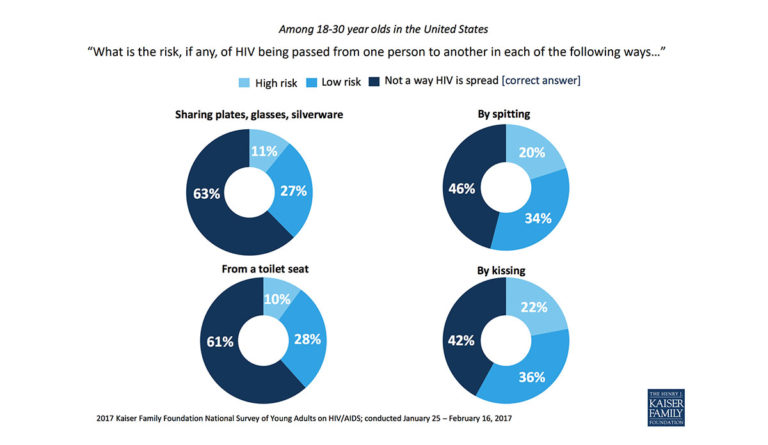HIV from Silverware? Fork No!
Even though accurate information has been widely available for over three decades, misperceptions about HIV transmission persist.

Read Time: 2 minutes
Published:
In 1983, the Centers for Disease Control and Prevention identified the main ways that HIV is transmitted, as well as ways that it is not, publishing this information in the Morbidity and Mortality Weekly Report. Even though this information has been widely available for over three decades, misperceptions about HIV transmission persist.
The 2017 Kaiser Family Foundation National Survey of Young Adults on HIV/AIDS included results from nearly 1,800 people between the ages of 18 and 30 years. Interviews were in English and completed either online or by telephone. The graphic shows young Americans’ answers.
A large number of respondents did not know how one becomes infected with HIV. More than one-third of survey respondents believe the virus can be spread through sharing kitchenware (plates, glasses, and silverware) and from a toilet seat. Over half of the survey respondents thought spitting and kissing were ways HIV could be spread. HIV cannot be spread through any of these methods.
These misperceptions contribute to the stigma that HIV-positive individuals continue to face. In the same survey, over half of the respondents reported that they would be uncomfortable having an HIV-positive roommate (51%) or having an HIV-positive individual prepare their food (58%).
Databyte via National Survey of Young Adults on HIV/AIDS Chart Pack. Kaiser Family Foundation.



